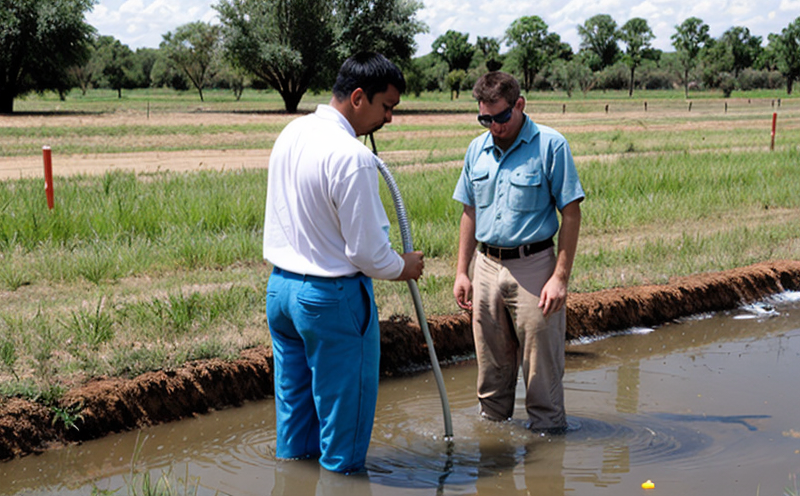OECD 201 Algal Growth Inhibition Bioassay in Groundwater
The OECD 201 Algal Growth Inhibition Bioassay (GAI) is a critical tool used to assess the toxicity of groundwater samples. This bioassay evaluates how well algae grow under controlled conditions, which can indicate the presence and concentration of toxic substances that may harm aquatic ecosystems and human health.
Algae are primary producers in freshwater environments and play a vital role in nutrient cycling and oxygen production. However, their growth is directly linked to water quality; thus, monitoring algal growth provides an early warning sign for potential contamination issues. The OECD 201 GAI bioassay measures the inhibition of algal reproduction as an indicator of toxicant presence.
The bioassay follows a series of steps: sampling, preservation, transport, preparation, and analysis. Groundwater samples are collected from monitoring wells or other sources, preserved with appropriate fixatives to prevent degradation, and transported to our laboratory for testing. Once received, these samples undergo rigorous quality control measures before being prepared for the bioassay.
The OECD 201 GAI employs photoautotrophic algae cultures typically using species like Scenedesmus obliquus or Chlorella vulgaris. These organisms are inoculated into nutrient solutions containing groundwater samples at various concentrations to observe growth rates over time. Growth is measured by assessing chlorophyll content through spectrophotometric analysis.
The OECD 201 GAI bioassay is widely recognized for its sensitivity and reproducibility, making it compliant with international standards such as ISO 7863:2015. Its application ensures regulatory compliance by providing robust evidence of water quality in support of environmental protection efforts.
This method not only helps identify contaminants but also aids in determining their concentration levels. By quantifying the degree of inhibition, researchers and regulators can make informed decisions about remediation strategies or further investigation into specific areas.
Our laboratory adheres strictly to the guidelines outlined by the Organization for Economic Cooperation and Development (OECD) as well as ISO standards when performing this bioassay. Compliance with these stringent protocols guarantees accurate results that are reliable and repeatable, ensuring confidence in the conclusions drawn from our analyses.
Why It Matters
The OECD 201 Algal Growth Inhibition Bioassay is essential for several reasons. Firstly, it serves as a sentinel of environmental health by detecting early signs of contamination before they become widespread issues. Secondly, the results from this bioassay can inform water resource management policies and practices aimed at preserving natural habitats.
Groundwater is often the primary source of drinking water for many communities worldwide. Ensuring its purity through regular testing using methods like the OECD 201 GAI helps protect public health by identifying potential threats from industrial activities, agricultural runoff, or other sources of pollution.
In addition to safeguarding human health and ecology, compliance with regulations requiring such assessments demonstrates a commitment to sustainable development. This bioassay contributes significantly towards meeting global commitments under frameworks like the United Nations Sustainable Development Goals (SDGs).
Benefits
- Regulatory Compliance: Ensures that your organization meets all relevant standards and guidelines set forth by regulatory bodies.
- Precision: Provides precise measurements of toxicant presence, allowing for accurate risk assessments.
- Early Detection: Identifies potential contamination issues early on, enabling timely interventions to prevent broader impacts.
- Evidence-Based Decisions: Offers solid scientific data supporting informed decisions regarding water management strategies and policy formulation.
Quality and Reliability Assurance
To ensure the accuracy and reliability of our results, we implement several quality control measures throughout every stage of the OECD 201 Algal Growth Inhibition Bioassay process. These include:
- Detailed sample documentation ensuring traceability from collection to analysis.
- Regular calibration and validation of equipment used in preparation, inoculation, and measurement phases.
- Strict adherence to ISO 7863:2015 guidelines for standardizing procedures across all laboratories involved.





